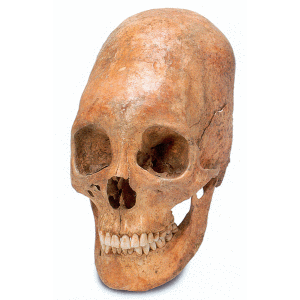'Hunnic' modified skulls: physical appearance, identity and the transformative nature of migrations
Who, what, where and when
Guest lecture to be given by Susanne Hakenbeck, McDonald Institute for Archaeological Research/Newnham College, Cambridge.
Dr. Hakenbeck's lecture will take place on 6 March 2009 at 4:15 PM at the University of Copenhagen at Amager (KUA), room 23.4.39, and will be held in English. It will be arranged by The Danish Society for Central Asia and Roots of Europe.
Everybody is welcome.
Short description of the topic
 Historically, the advance of the Huns into Roman territory in the fourth and fifth centuries AD has been thought of as the domino piece that set in motion the migrations of other barbarian tribes which ultimately brought about the collapse of the Roman Empire.
Historically, the advance of the Huns into Roman territory in the fourth and fifth centuries AD has been thought of as the domino piece that set in motion the migrations of other barbarian tribes which ultimately brought about the collapse of the Roman Empire.
However, the archaeological evidence associated with them provides a more complex picture of migrations and the effects they had on the migrating and the receiving populations:
-
First, the migration of nomadic peoples into the Roman provinces in the Carpathian basin was a gradual process that profoundly changed the material expressions of identity and led to the development of a ‘hybrid’ identity.
-
Second, the distribution of women with modified skulls, a practice that has been associated with the Huns, west of the Carpathian basin indicates directed movements of individuals, possibly in the context of an exogamous social structure.
Individuals with modified skulls and the manner in which they were buried thus provide a case study for examining the relationship between physical appearance, identity and the transformative nature of migrations.![]()
